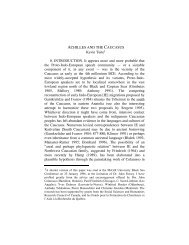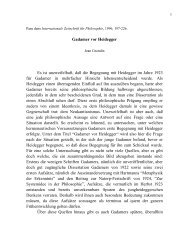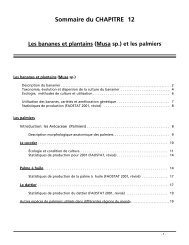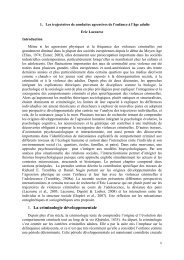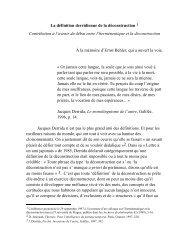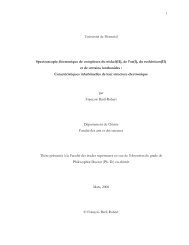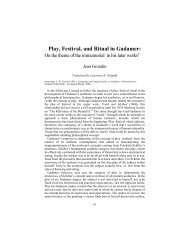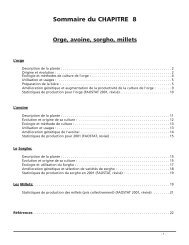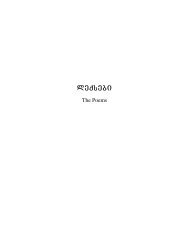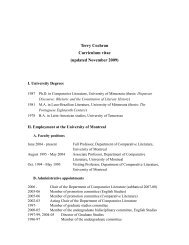You also want an ePaper? Increase the reach of your titles
YUMPU automatically turns print PDFs into web optimized ePapers that Google loves.
ia mtazeda<br />
with a bullet). The code of blood-price and vendetta was very much alive in Svaneti until recent<br />
times, and the dying Mirangula’s principal fear is that his death will be unavenged. He prays to God<br />
for one last shot, his wish is granted, and he kills Vezden. In his final speech Mirangula totals up the<br />
score, and — satisfied that he came out ahead — breathes his last. The episode ends with a macabre<br />
description of the uses to which his corpse will be put by various animals. At this point the scene<br />
returns to Balkaria, where some Ushgulian “priests” (bap’ær) have been taken captive. The SbMat<br />
variant states that the Savs shaved the priests’ beards off and forced them to eat k’erjin, Balkarian<br />
sourdough bread. This is regarded as a serious outrage: the wearing of a beard is a sign of the<br />
priesthood, and k’erjin is seen as an infidel substitute for sepsk’wer, the “communion bread”<br />
consumed in Svan rituals. The SvP (but not SbMat) text further mentions the humiliation of<br />
Ushgulian wives by having their underwear stripped off. The priests escape their captors and head<br />
back to Georgia. At the pass they find Mirangula’s body, and also the nine oxen he stole. They lead<br />
the animals to Ushgul to be offered at a lukhor. This word literally means “gathering,” that is, a<br />
meeting of the clan elders. The SbMat text specifies that a funeral feast (lagwæn) is held. The older<br />
version further states that invitations are sent “as far as Chubeqhev,” that is, representatives from all<br />
of Upper Svaneti attend the feast. To further mark the occasion, “wheat from Jerusalem” is used to<br />
make the sepsk’wer, and wine is brought from the Black Sea coast. (Because of the high altitude,<br />
grapes do not grow in most of Upper Svaneti). The wheat is processed at three sites in the vicinity of<br />
Ushgul, mentioned in both versions of the poem. Twetnuld is a 5000-meter peak near the border<br />
with Balkaria; At’k’wer is an alpine pasture, and the mountain named Mushur is part of the ridge<br />
separating Upper and Lower Svaneti (information from Ambak’o Ch’k’adua, Svanur t’op’onimta<br />
saleksik’ono masala [ms.]). In addition, God (in the SbMat variant, St. George of Ilor) sends an ox<br />
adorned with candles and incense as an offering. The image of an ox sent by a divinity for sacrifice<br />
recalls an incident which is reported to have occurred annually on the feastday of of St. George at<br />
the celebrated shrine in his name at Ilor (near the Black Sea coastal town of Ochamchira). The saint<br />
was believed to lead an ox to the church at night, and miraculously leave it inside the locked church.<br />
The next day, the priests opened the church doors and discovered the animal. It was then slaughtered<br />
and pieces of its meat, believed to have curative powers, were distributed to the faithful (Sergi<br />
Mak’alatia, Samegrelos ist’oria da etnograpia. Tbilisi: Sakartvelos mxaretmcodneobis sazogadoeba,<br />
1941, pp. 354-358.) Both versions have the same rather odd conclusion: The priests are gathered in<br />
the darbæz, the upper floor of a Svanetian house, and the floor collapses under them. According to<br />
the SbMat text, “many men were injured.” The lukhor breaks up, and thus it ends. It is not known<br />
whether this account is based on an actual incident, or serves as a hyperbolic means of indicating the<br />
large number of people who attended the funeral. The deity periodically invoked in the poem is<br />
Lamrya Ushgwlæsh “(St.) Lamaria of Ushgul.” The name is ultimately derived from Mary, the<br />
mother of Jesus. The shrine dedicated in her name — an ancient stone church encircled by a wall —<br />
is located outside of Zhibiani, one of the four hamlets within the Ushgul community.<br />
38. Dideb, dideb tarigdzelas (“Glory to the Archangel”). Source: SvP 316-317; variant in SbMat<br />
XXXI:4, pp 4-7. Recorded by Arsen Oniani in 1917 in the Lower Svan province of Lashkheti.<br />
Tarigdzela (variants include Tærglezer, Taaringzel) is the Svanified rendering of medieval Georgian<br />
Mtavarangelozi, “Archangel.” In the religious system of 19th-century Svaneti, the Archangel was<br />
one of the four chief deities, along with Khosha Gherbet, “Supreme God”; Jgëræg, “St. George”;<br />
and Lamaria. According to Charachidzé, he “functions as ‘grand vizier’ to the supreme god,<br />
exercising authority in his name, representing the power of the ‘celestial sovereign’ in the terrestial<br />
realm” [SR 286]. As is characteristic of pre-Christian Georgian hymns, praise is addressed to both<br />
the deity and the shrine dedicated to him. It is not clear which shrine inspired this poem, since there<br />
are so many (two dozen in Upper Svaneti alone) that bear the Archangel’s name. In any event, the<br />
description is probably not greatly exaggerated. First, quite a few Svanetian churches, like the one in<br />
the poem, are adjoined to a defense tower and surrounded by a stone wall. Second, no visitor to<br />
Svaneti can help being awestruck by the stunning collection of gold and silver artifacts, crosses,<br />
illuminated manuscripts, and icons that some churches have accumulated over the centuries. For the<br />
most part, these items were presented to the shrine, and hence the deity, by individuals who sought<br />
or had received some favor, or to appease the deity if — in the opinion of a seer — some disaster<br />
132



